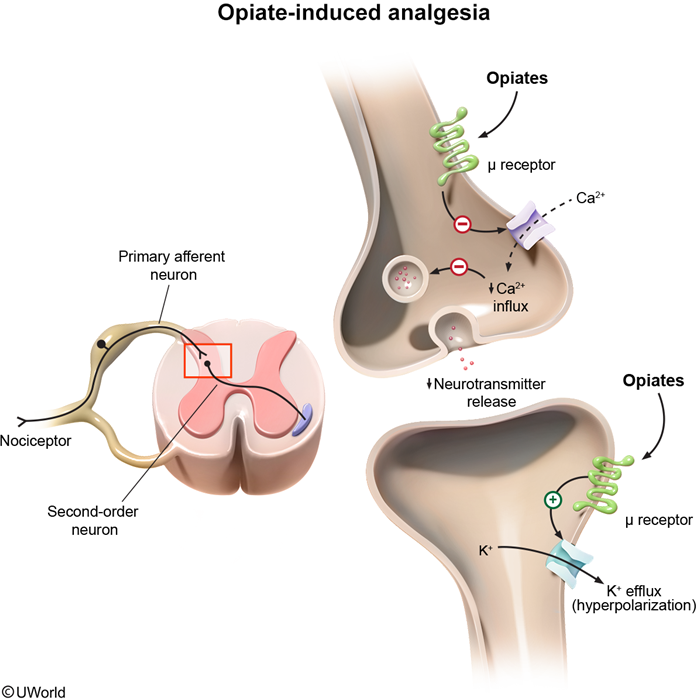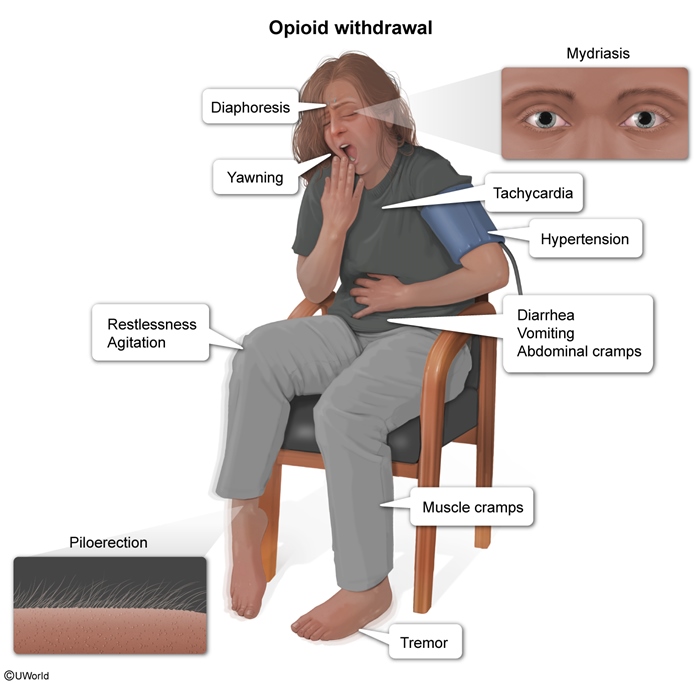Opioid Use Disorder
Article Sections
Introduction
Opioid use disorder is a chronic, relapsing condition marked by the compulsive use of opioids despite harmful consequences. Opioids provide pain relief and euphoria, but can also cause central nervous system (CNS) depression and potentially fatal respiratory failure. Chronic opioid use results in multiple physiologic and psychologic changes that drive addiction, including the development of tolerance and withdrawal.
Physiology
Opioids act on multiple receptor types, including mu, kappa, and delta, that are located throughout the brain, spinal cord, and peripheral tissues. The mu opioid receptor is the primary receptor responsible for generating the characteristic effects of opioids.
Activation of mu opioid receptors in the CNS produces:
- Analgesia (Figure 1): Reduced transmission of nociceptive information from the peripheral nerves to the spinal cord inhibits the perception of pain in the brain.
Continue Learning with UWorld
Get the full Opioid Use Disorder article plus rich visuals, real-world cases, and in-depth insights from medical experts, all available through the UWorld Medical Library.
Figures

